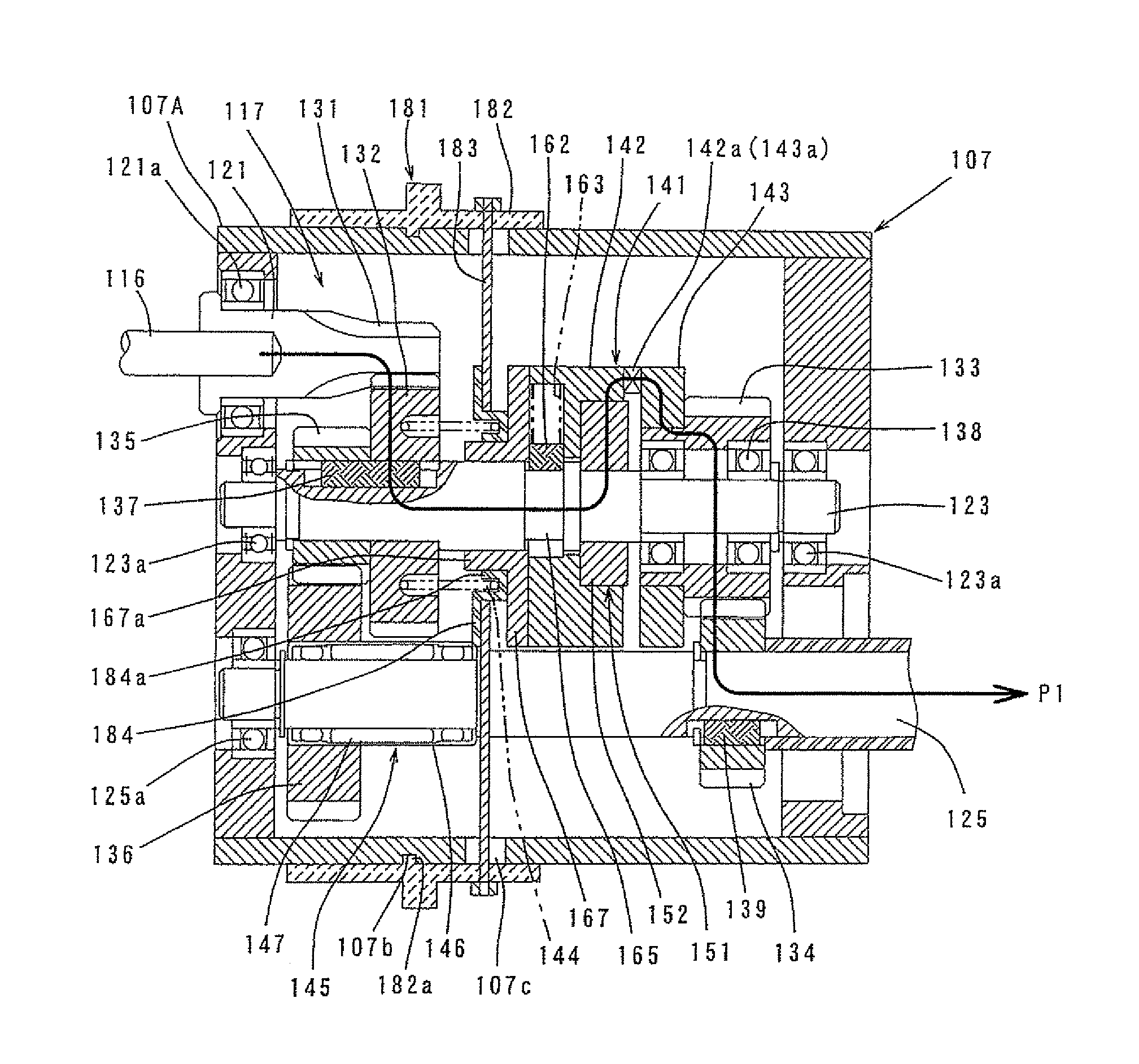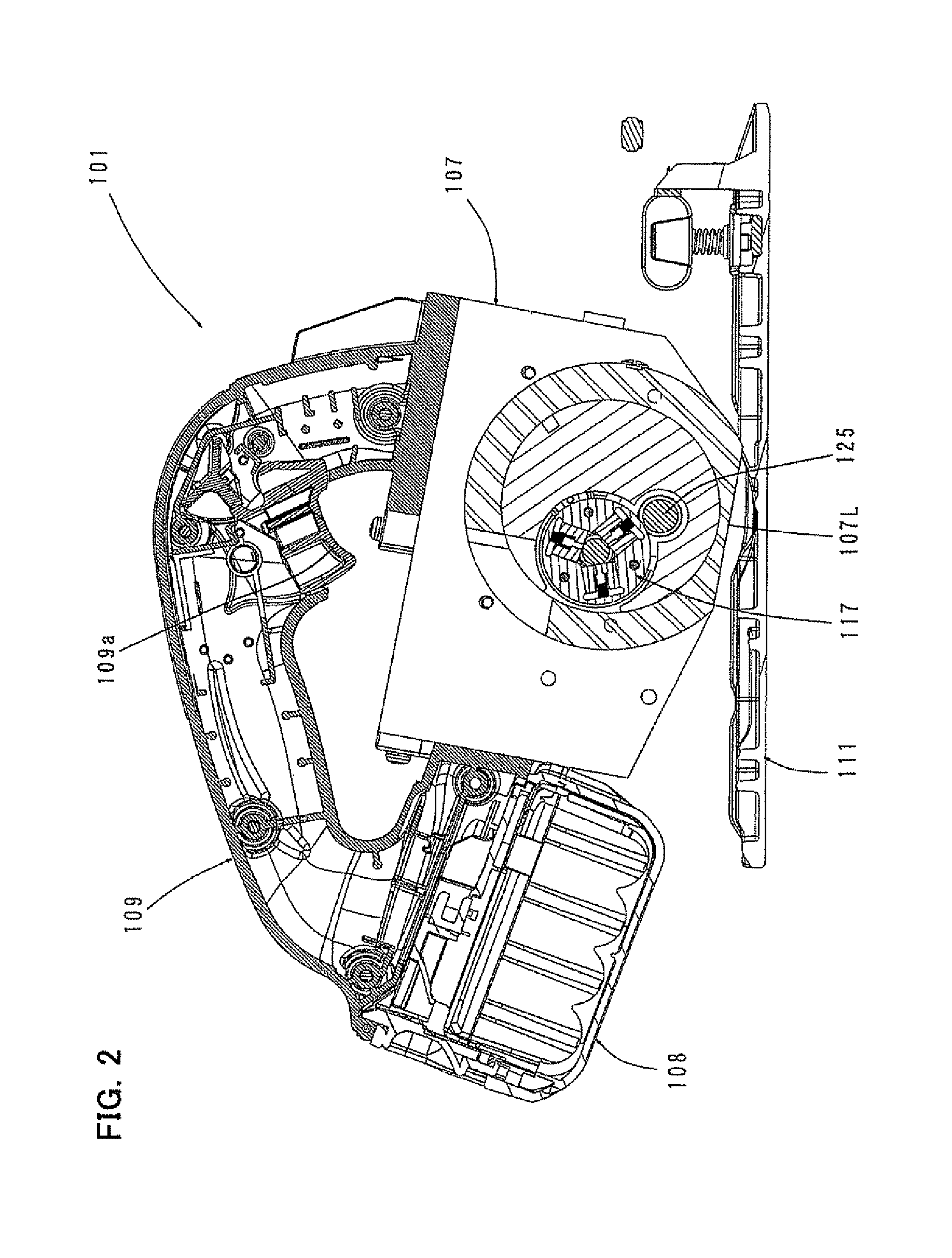Circular saw
a circular saw and saw blade technology, applied in the field of circular saws, can solve the problems of small tooth face area, easy wear of gears, and small wear resistance of gears, and achieve the effect of smoother cutting operation
- Summary
- Abstract
- Description
- Claims
- Application Information
AI Technical Summary
Benefits of technology
Problems solved by technology
Method used
Image
Examples
first embodiment
of the Invention
[0049]A first embodiment of the invention is now explained with reference to the drawings. A battery-powered circular saw (also referred to as a power tool) having a battery is now explained as a representative embodiment of the “circular saw” according to the invention. FIG. 1 is a side view showing an entire circular saw 101 according to this embodiment. FIG. 2 is a sectional side view of the entire circular saw 101. FIG. 3 is a sectional front view of the entire circular saw 101. As shown in FIGS. 1 to 3, the circular saw 101 according to this embodiment includes a base 111 which can be placed on a workpiece (not shown) and moved in a cutting direction, and a circular saw body 103 disposed above the base 111.
[0050]The circular saw body 103 mainly includes a blade case 104 that covers substantially an upper half of a disc-like blade (saw blade) 113 which is rotated in a vertical plane, a motor housing 105 that houses a driving motor 115, a gear housing 107 that hou...
second embodiment
of the Invention
[0103]A second embodiment of the invention is now explained with reference to FIGS. 22 and 23. FIG. 22 is an external view showing the mode switching mechanism 181 and a speed-change torque adjusting mechanism 191, and FIG. 23 is a developed sectional view thereof. In this embodiment, the speed-change torque adjusting mechanism 191 is provided which allows the user to arbitrarily adjust a switching set value for speed change (speed-change torque value) at which switching from the first power transmission path P1 to the second power transmission path P2 is effected. In the other points, this embodiment has the same construction as the above-described first embodiment. Therefore, components shown in FIGS. 22 and 23 are given like numerals as in the first embodiment and will not be described or briefly described. The speed-change torque adjusting mechanism 191 is disposed in juxtaposition with the above-described mode switching mechanism 181, and it functions when the a...
PUM
| Property | Measurement | Unit |
|---|---|---|
| speed | aaaaa | aaaaa |
| power transmission | aaaaa | aaaaa |
| torque | aaaaa | aaaaa |
Abstract
Description
Claims
Application Information
 Login to View More
Login to View More - R&D
- Intellectual Property
- Life Sciences
- Materials
- Tech Scout
- Unparalleled Data Quality
- Higher Quality Content
- 60% Fewer Hallucinations
Browse by: Latest US Patents, China's latest patents, Technical Efficacy Thesaurus, Application Domain, Technology Topic, Popular Technical Reports.
© 2025 PatSnap. All rights reserved.Legal|Privacy policy|Modern Slavery Act Transparency Statement|Sitemap|About US| Contact US: help@patsnap.com



